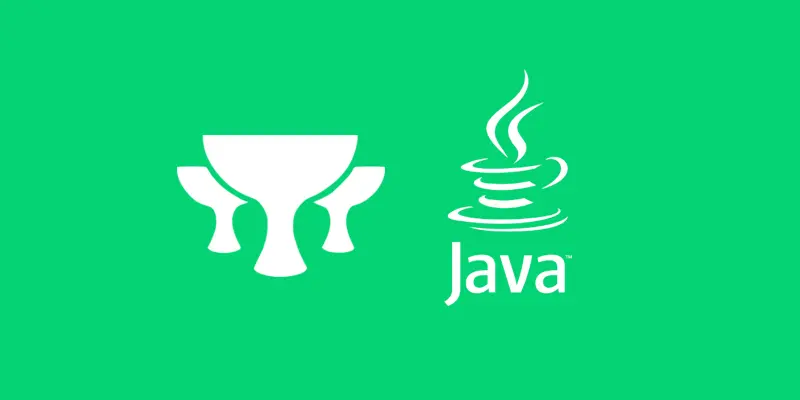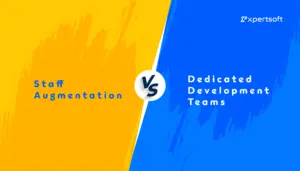Java with Grails has become a powerful combination in modern web development, enhancing Java’s robustness while streamlining its traditionally complex processes. Known for its stability and platform independence, Java powers millions of web applications worldwide. However, the typical Java development workflow can be slowed by extensive boilerplate code and intricate configurations. This is where Grails, a dynamic web application framework, steps in to simplify and accelerate the development process.
Built on the Java Virtual Machine (JVM) and fully compatible with Java, Grails utilizes the Groovy language, making it an efficient framework for reducing code complexity. Java with Grails offers out-of-the-box functionalities, seamless integrations, and powerful plugins, allowing developers to boost productivity while minimizing the repetitive tasks that often bog down traditional Java projects.
In this article, we’ll dive into how Java with Grails transforms web application development, from improving coding efficiency to providing rich ORM capabilities and offering a rich plugin ecosystem. Discover why this framework is a game-changer for developers looking to leverage both speed and performance in their projects.
1. Introduction to Grails and Java

Java has been the backbone of enterprise web development for over two decades. However, as the complexity of web applications has grown, developers have sought more efficient ways to harness Java’s power without being bogged down by its verbose nature. Grails, a framework based on Groovy, steps in to meet this need. It simplifies the development process by adopting the “convention over configuration” paradigm, minimizing the amount of code developers need to write while maintaining the full power of the Java ecosystem.
By utilizing Grails, Java developers can build web applications faster without sacrificing performance or scalability. The framework provides a highly productive development environment by automating common tasks and offering built-in functionalities, allowing developers to focus more on writing business logic and less on repetitive boilerplate code.
2. Why Choose Java with Grails for Web Applications
There are numerous frameworks available for Java developers, including Spring, Hibernate, and Play Framework, so why choose Grails? The answer lies in simplicity, productivity, and flexibility. Grails was designed with developer productivity in mind, offering a smooth learning curve for those familiar with Java, while also embracing Groovy, a dynamic language that brings the flexibility and expressiveness often missing in traditional Java development.
Some of the core reasons to choose Grails include:
- Reduced Boilerplate Code: Grails reduces the amount of boilerplate code significantly, which is often one of the biggest pain points in Java development.
- Convention Over Configuration: Grails adopts sensible defaults and conventions, meaning developers don’t need to spend as much time configuring their projects.
- Seamless JVM Compatibility: Since Grails is built on Groovy, which runs on the JVM, it integrates smoothly with existing Java libraries and codebases.
- Rapid Prototyping: Grails allows for quick iterations and prototyping, enabling developers to turn ideas into functional web applications quickly.
- Plugin Ecosystem: Grails has a rich ecosystem of plugins that extend the functionality of the framework, making it easier to integrate third-party services, add features, or manage infrastructure.
- Support for RESTful APIs and Microservices: Grails offers built-in support for REST APIs and microservice architectures, which are increasingly popular in modern web development.
These features make Grails a powerful tool for developers who want to leverage Java’s strengths while avoiding its traditional drawbacks.
3. Grails and Groovy: A Perfect Blend
One of the key reasons why Grails enhances Java development is its use of Groovy, a dynamic language that runs on the JVM. Groovy is fully interoperable with Java, meaning you can mix Groovy and Java code seamlessly in the same project. This flexibility allows developers to gradually adopt Grails and Groovy into their existing Java projects without a steep learning curve.
Key Benefits of Groovy for Java Developers:
- Dynamic Typing: Groovy’s dynamic typing system allows for faster development as developers don’t need to declare types for every variable.
- Scripting Capabilities: Groovy is often used as a scripting language within Java applications, making it easier to write configuration files, test scripts, and automation tasks.
- Reduced Boilerplate: Groovy eliminates much of the boilerplate code that is required in Java. For example, in Groovy, getters and setters are generated automatically, and the language supports a more concise syntax for collections, loops, and conditionals.
- Familiar Syntax: Groovy’s syntax is very similar to Java’s, which makes it easy for Java developers to pick up.
By combining the power of Groovy with the robustness of Java, Grails enables developers to write more expressive, concise, and readable code.
4. Grails’ Convention over Configuration
Traditional Java frameworks often require extensive configuration files (XML or annotations), which can lead to complexity and increased development time. Grails, however, follows the “convention over configuration” paradigm, which means it automatically applies sensible defaults for common tasks, reducing the need for explicit configuration.
How “Convention over Configuration” Enhances Development:
- Automatic Mapping: Grails automatically maps models to database tables based on naming conventions, reducing the need for complex configuration files.
- Sensible Defaults: Grails offers default settings for many aspects of a project, from database configuration to file paths, enabling developers to focus on writing business logic.
- Code Generation: Grails provides scaffolding tools that generate CRUD (Create, Read, Update, Delete) operations for your models, saving time during the initial development phase.
This approach not only speeds up the development process but also simplifies maintenance by reducing the number of configuration files and settings that developers need to manage.
5. Grails’ Enhanced Productivity Features
At its core, Grails is designed to maximize developer productivity. This is achieved through several built-in tools and features that streamline web application development.
Key Productivity Features in Grails:
- Scaffolding: Grails can automatically generate CRUD interfaces for your domain classes, which allows for rapid application prototyping.
- Domain-Specific Language (DSL): Grails uses Groovy’s DSL capabilities to simplify configuration, testing, and data validation. This leads to cleaner and more readable code.
- Integrated Build System: Grails uses Gradle as its default build tool, allowing developers to easily manage dependencies, build processes, and task automation.
- Hot Code Reloading: Grails offers hot-reloading features, enabling developers to see the impact of their changes immediately without restarting the server.
These productivity features are a significant improvement over traditional Java frameworks, which often require manual coding of boilerplate functionality and complex configurations.
6. Grails’ Plugin Ecosystem: Extending Functionality with Ease
One of the standout features of Grails is its rich plugin ecosystem. With hundreds of plugins available, developers can easily extend the functionality of their applications without writing everything from scratch.
Popular Grails Plugins:
- Spring Security Core Plugin: Provides robust authentication and authorization mechanisms.
- Quartz Plugin: Adds support for scheduling tasks and jobs.
- Grails Mail Plugin: Enables easy integration with email services.
- REST Client Plugin: Simplifies communication with REST APIs.
- Asset Pipeline Plugin: Manages CSS, JavaScript, and image assets in Grails applications.
The Grails plugin architecture allows developers to quickly integrate third-party services, manage application infrastructure, or add new features without the overhead of custom development.
7. GORM: Simplified ORM for Java Developers
One of the biggest pain points in Java web development is managing databases and persistence layers. Traditionally, Java developers use Hibernate or JPA (Java Persistence API) to handle ORM (Object-Relational Mapping), but these solutions often require extensive configuration and complex mappings.
Grails ORM (GORM) simplifies this by offering a convention-based ORM solution that integrates seamlessly with Hibernate while removing much of the configuration complexity.
Key Features of GORM:
- Dynamic Finders: GORM allows developers to query the database using simple, readable methods, such as
findByNameorfindAllByAgeGreaterThan. - Transaction Management: GORM automatically handles transaction management, reducing the need for boilerplate code.
- Multi-Datasource Support: GORM supports multiple databases out of the box, enabling developers to easily scale their applications across different environments.
GORM is a powerful tool for Java developers who want to simplify their persistence layer and reduce the amount of SQL code they need to write.
8. RESTful APIs and Microservices with Grails
In today’s world of distributed systems and microservices, RESTful APIs are a critical component of modern web applications. Grails provides first-class support for building RESTful APIs, making it an excellent choice for developers who want to build scalable, API-driven applications.
Grails RESTful Features:
- Automatic JSON/XML Rendering: Grails automatically converts domain objects into JSON or XML, simplifying the creation of RESTful APIs.
- URL Mappings: Grails provides powerful URL mapping capabilities, allowing developers to create clean, RESTful routes with minimal configuration.
- API Versioning: Grails makes it easy to implement API versioning, ensuring backward compatibility for different versions of your API.
With these features, Grails is an ideal choice for building microservices and API-driven architectures, allowing developers to focus on business logic rather than the underlying infrastructure.
9. Grails for Rapid Prototyping and Scalability
One of the standout advantages of Grails is its ability to facilitate rapid prototyping. The framework’s scaffolding features, combined with its minimal configuration requirements, allow developers to quickly build functional prototypes that can be iterated upon and scaled as needed.
Benefits of Grails for Rapid Prototyping:
- Faster Time to Market: With built-in features like scaffolding and hot-reloading, developers can quickly prototype and refine applications.
- Scalability: Grails applications are highly scalable, thanks to their integration with JVM-based technologies like Spring and Hibernate.
- Easy Refactoring: Grails’ convention-based structure makes it easy to refactor and scale applications as they grow in complexity.
By using Grails, developers can build applications that scale from simple prototypes to enterprise-grade systems without needing to switch frameworks.
10. Seamless Integration with Java Libraries and Ecosystems
One of the greatest strengths of Grails is its seamless integration with the Java ecosystem. Since Grails runs on the JVM, developers can easily integrate any existing Java library or framework into their Grails projects.
Examples of Java Integration:
- Spring Framework: Grails is built on top of Spring, allowing developers to leverage the power of Spring’s dependency injection, security, and transaction management.
- Hibernate: GORM is built on top of Hibernate, meaning developers can use existing Hibernate features alongside Grails’ simplified ORM capabilities.
- Java Libraries: Whether it’s logging with Log4j, interacting with databases using JDBC, or working with Apache Commons utilities, Grails allows seamless integration with the full spectrum of Java libraries.
This interoperability ensures that developers familiar with the Java ecosystem can use Grails without sacrificing access to the tools and libraries they rely on.
11. Grails’ Testing and Debugging Advantages
Effective testing and debugging are critical to building robust web applications, and Grails excels in this area by providing comprehensive tools for unit testing, integration testing, and functional testing.
Testing Tools in Grails:
- Spock: Grails integrates with the Spock Framework, a powerful testing framework for Groovy and Java that simplifies writing readable and expressive tests.
- Grails Test Suite: Grails provides built-in testing support, including mocking services, domain classes, and controllers, making it easier to write unit and integration tests.
- Functional Testing: Grails supports functional testing using tools like Geb and Selenium, allowing developers to automate browser-based tests for their web applications.
Debugging is also streamlined, thanks to Grails’ comprehensive logging features and integration with debugging tools like IntelliJ IDEA and Eclipse.
12. Security Features in Grails for Web Applications
Security is a top priority for any web application, and Grails comes with a range of built-in security features to protect against common threats like SQL injection, cross-site scripting (XSS), and cross-site request forgery (CSRF).
Grails Security Features:
- Spring Security Integration: Grails integrates with Spring Security, one of the most powerful and flexible security frameworks available for Java, allowing developers to implement robust authentication and authorization mechanisms.
- CSRF Protection: Grails provides CSRF protection out of the box, ensuring that your application is safe from malicious form submissions.
- Grails Security Plugins: The Grails plugin ecosystem includes several security plugins that add additional layers of protection, such as SSL enforcement and audit logging.
These features make Grails a secure choice for developing enterprise-grade web applications.
3. Real-World Examples of Grails in Java Development
Grails is used by companies of all sizes, from startups to large enterprises, to build web applications quickly and efficiently. Some real-world examples of Grails in action include:
13.1. LinkedIn
LinkedIn, one of the largest professional networking sites, uses Grails for several of its internal applications, particularly those that require rapid iteration and scalability.
13.2. Sky
Sky, a leading European broadcaster, uses Grails to power some of its customer-facing web applications, taking advantage of Grails’ ability to rapidly build and scale applications in a competitive industry.
13.3. Educa
Educa, an educational technology company, uses Grails to power its learning management system, allowing educators and institutions to deliver personalized learning experiences through a scalable platform.
These case studies highlight Grails’ versatility and ability to handle large-scale, mission-critical applications.
14. Challenges and Limitations of Grails
While Grails offers numerous benefits, it’s not without its challenges. Some of the common limitations include:
- Learning Curve for Groovy: Although Groovy is similar to Java, developers unfamiliar with dynamic languages may face a learning curve when adopting Grails.
- Performance Overhead: Grails applications can have a performance overhead compared to lightweight Java frameworks like Spring Boot, particularly when used for microservices.
- Plugin Compatibility: While Grails has a rich plugin ecosystem, some plugins may not be maintained as actively as others, leading to potential compatibility issues.
Despite these challenges, Grails remains a highly productive framework for many use cases, particularly for teams that need to develop and deploy applications quickly.
Conclusion: Is Grails the Future of Java Web Development?
Grails represents a significant evolution in the world of Java web development. By combining the power of Groovy with the robustness of the Java ecosystem, Grails enables developers to build web applications faster, with less boilerplate, and more flexibility. Its focus on convention over configuration, coupled with a rich plugin ecosystem and strong support for RESTful APIs, makes Grails a compelling choice for modern web development.For developers and enterprises looking to streamline their Java web development processes, Grails is an excellent tool that delivers both productivity and scalability. While it may not replace all Java frameworks, it certainly offers a more efficient and developer-friendly alternative for building high-quality web applications.
What is the advantage of using Java with Grails?
Using Java with Grails allows developers to leverage the stability and robustness of Java while taking advantage of Grails’ rapid development capabilities. Grails simplifies coding and accelerates the development process, making it ideal for building scalable web applications quickly.
Can Grails be used with other programming languages besides Java?
Although Grails is built on top of the Java Virtual Machine (JVM) and primarily designed for Java-based applications, it also supports Groovy, a dynamic language for the JVM. This flexibility makes it easy for Java developers to adopt Grails while enhancing productivity.
Is Java with Grails suitable for enterprise-level applications?
Yes, Java with Grails is highly suitable for enterprise-level applications. The combination provides the scalability and performance required for large, complex applications, while Grails helps accelerate development and reduce time to market.
How does Grails improve Java development for web applications?
Grails simplifies Java web development by providing a convention-over-configuration approach, built-in tools for RESTful APIs, and powerful database integration. It helps reduce boilerplate code, improving developer productivity.
What types of projects benefit most from using Java with Grails?
Projects that require rapid development, scalability, and flexibility benefit most from using Java with Grails. It’s ideal for web applications, API-based services, and any project where quick iteration is essential.
How easy is it to integrate Java libraries into a Grails project?
Grails seamlessly integrates with Java libraries because it runs on the JVM. This compatibility allows developers to incorporate existing Java code, libraries, and tools into their Grails projects, making the transition smooth and efficient.
What are some popular use cases for Java with Grails?
Java with Grails is commonly used for building web applications, e-commerce platforms, RESTful APIs, and microservices. Its ability to combine rapid development with the robustness of Java makes it a popular choice for scalable, enterprise-grade solutions.



